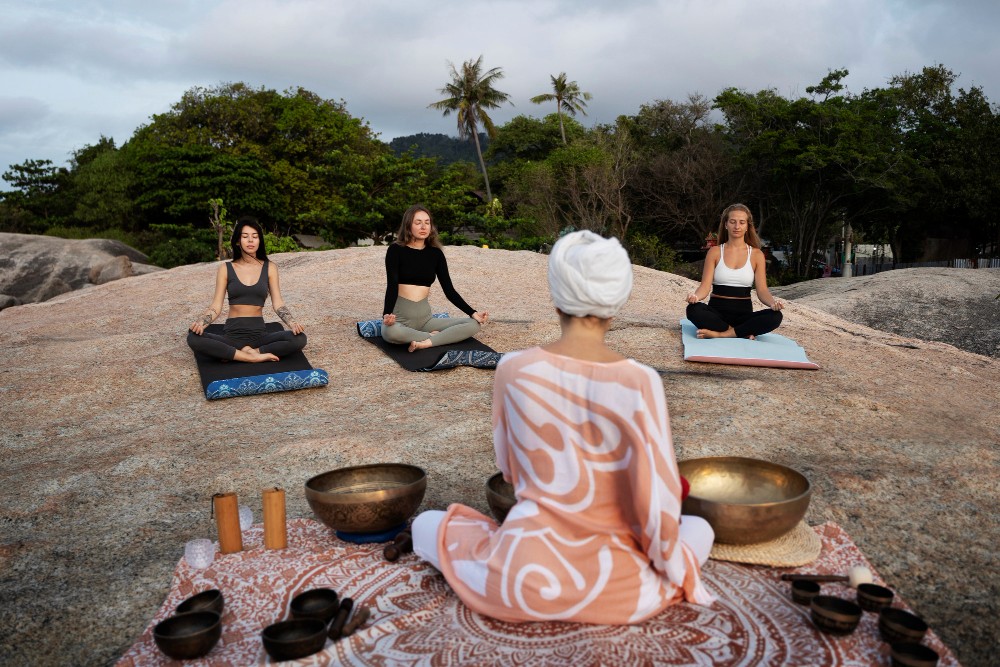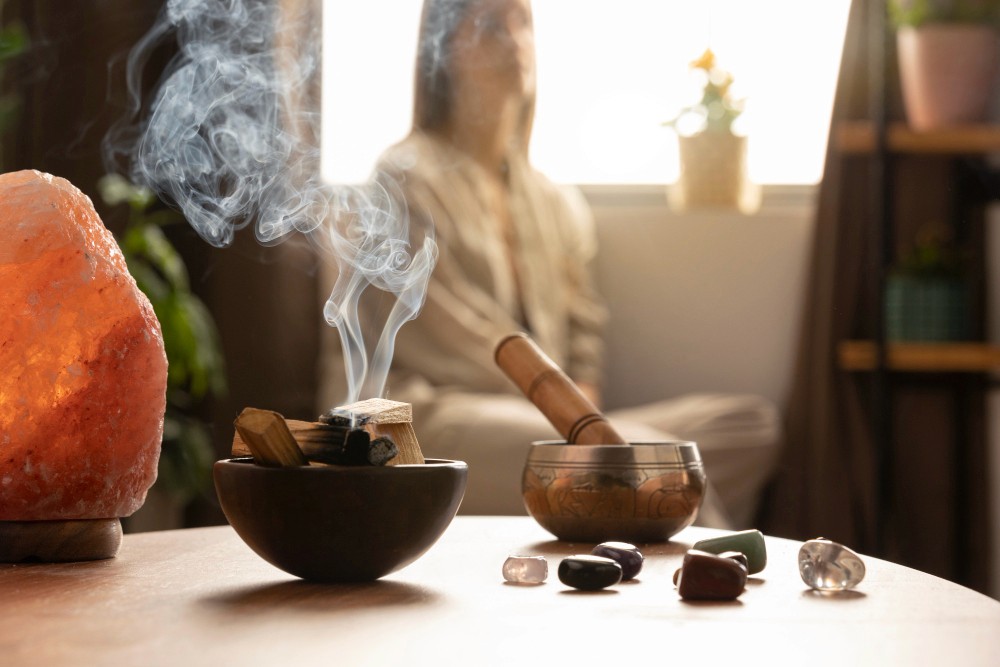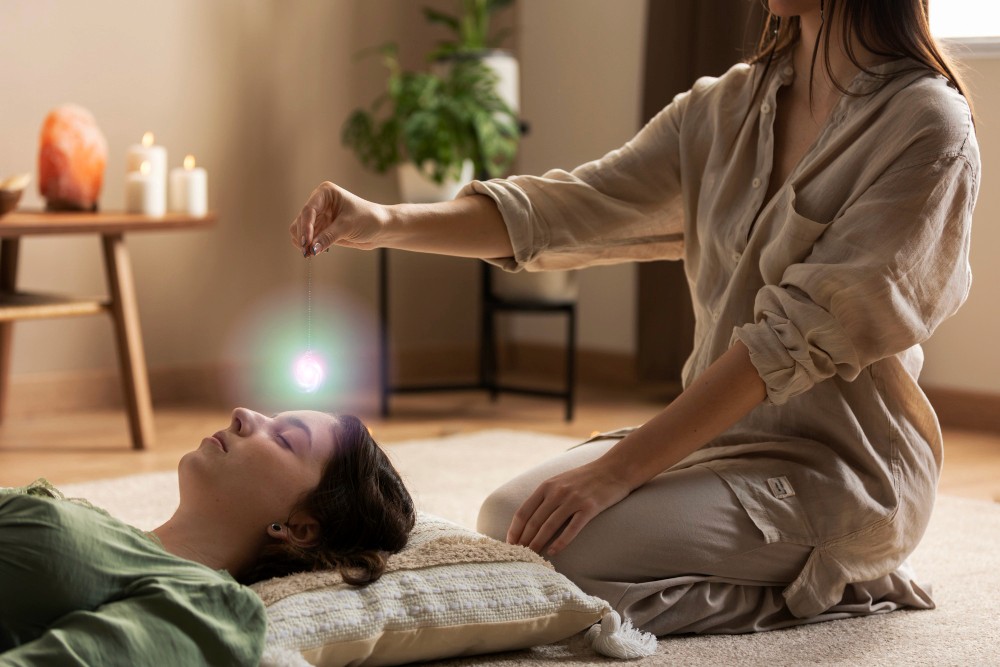Soul
Beyond the Poses: Unveiling the Spiritual Purpose of Yoga

Team NxtClue
Content
|
4 mins
|
Aug 27, 2024

0:00/1:34
Don't have enough time to read?
Listen

The True Purpose of Yoga – Spiritual Growth
Yoga is often misunderstood as a practice that only keeps your body in shape. While Yoga undeniably impacts your physical well-being positively, it’s more than the ‘asanas’ you do. Many practitioners and trainers still don’t know its true purpose.
The essence of Yoga lies in the name itself. Yoga in Sanskrit means ‘to add’; and Yoga simply means uniting your mind and body and becoming one with your soul.
The True Purpose of Yoga
Yogasutra, written by Patanjali, is the only written scripture about Yoga that follows the concept of ‘Samadhi,’ which means ‘the superconscious or awakened state’ that is closest to Nirvana—the final stage of spirituality.
If you’re truly keen on uniting the mind and body and moving towards a more awakened state, here’s how Yoga acts as a medium for your spiritual growth.
Self-Awareness
Yoga taps into your awareness of self from the very first day. As soon as you hit a pose (no matter how simple it is), it sends a message to your mind through your body about your foundation, which is touching the ground. If you lose sight of your foundation, you will fall; and if you get distracted, you won’t be able to hold your balance. This is the most fundamental level of consciousness that you attain on day one. Subsequently, you try to master poses that are harder and become more aware of your surroundings and your limitations. You accept those limitations and try to improve them with the best of your efforts.
Being aware of what you’re doing and its consequences is quite significant in real life. What will happen if your thoughts are not grounded or you forget the foundation on which you’ve laid your whole life?
From the simplest ones to the most difficult ones, each Yoga pose is a step in your journey that presents new challenges and pushes you to set higher goals. You learn to become one with your foundation and not lose sight of your goal even in the toughest of situations. You accept your weaknesses, learn to live with them, and try to improve them as best as you can.
Self-Control
Often our emotions are in charge of our actions, regardless of whether you are a hyper-emotional or hypo-emotional person. We act on our impulses in ways that we regret, and the reason is a lack of self-control. Breathing techniques in Yoga teach you to be calm and maintain a breathing pattern even during the toughest of poses. It’s hard to contort your body in the first place, and it’s even harder to sustain a pose for long. What do you do then?
You keep your mind calm and breathe. You push your body to its limits and increase the duration of your pose with each try. It’s quite different from your typical workout, where you get an adrenaline rush with every repetition. Yoga extends the limits of both your body and the mind. It teaches you to manage your anxiety with consistent breathing and strengthens your willpower. You get better with each passing day and attain more self-control.
I’d like to clarify one thing here. Self-control doesn’t mean that you have to curb your emotions or restrain yourself. Self-control enables you to process your thoughts and emotions coherently and control your impulses.
Keep Your Mind Quiet
We live in the age of information, and our brains are constantly gathering information from numerous sources. We often don’t realize it, but our subconscious mind is always working, and it is processing the information. We tend to develop thoughts and emotions that we either forget to express or we curb ourselves. These thoughts become the voices in your head, and the more we try to suppress them, the more annoying they get.
However, things start to change when we start meditating, which is an integral part of Yoga. Every breathing exercise in Yoga includes meditation, which is simply ‘doing nothing.’ When you meditate, you focus on your breathing and learn to keep it steady and within a pattern. It is about stopping your mind chatter by keeping it focused on things that need your attention at the moment and saving the rest for later. Think of your mind as a tool which you should be able to turn on or off whenever you want. And this is only possible when you can keep it quiet and let it focus regardless of the amount of information it receives every day.
Yoga is a way of living that can transform the way we think, feel, and act. It strengthens our connection to ourselves from the very fundamentals of our existence, such as our emotions, thoughts, physicality, and lifestyle. We learn the art of acceptance and cultivate a balanced approach to life. And all these aspects collectively contribute to our spiritual well-being.
Download
Related Blogs

11 min
Soul
Healing Energy of Reiki

Team NxtClue
|
27/08/24

11 min
Soul
Benefits of Massage Therapy

Team NxtClue
|
27/08/24

11 min
Soul
Healing with Hypnotherapy

Team NxtClue
|
27/08/24

11 min
Soul
Healing with Aromatherapy

Team NxtClue
|
27/08/24

I May Not Be the Menu, But I Can Still Guide You – I Know Some Shortcuts!
With us
Decision is yours
Without us

Copyright © 2024 NxtClue | All Rights Reserved
0:00/1:34
Don't have enough time to read?

Listen

4 mins
Soul
Beyond the Poses: Unveiling the Spiritual Purpose of Yoga

Team NxtClue
|
Aug 27, 2024
Download
The True Purpose of Yoga – Spiritual Growth
Yoga is often misunderstood as a practice that only keeps your body in shape. While Yoga undeniably impacts your physical well-being positively, it’s more than the ‘asanas’ you do. Many practitioners and trainers still don’t know its true purpose.
The essence of Yoga lies in the name itself. Yoga in Sanskrit means ‘to add’; and Yoga simply means uniting your mind and body and becoming one with your soul.
The True Purpose of Yoga
Yogasutra, written by Patanjali, is the only written scripture about Yoga that follows the concept of ‘Samadhi,’ which means ‘the superconscious or awakened state’ that is closest to Nirvana—the final stage of spirituality.
If you’re truly keen on uniting the mind and body and moving towards a more awakened state, here’s how Yoga acts as a medium for your spiritual growth.
Self-Awareness
Yoga taps into your awareness of self from the very first day. As soon as you hit a pose (no matter how simple it is), it sends a message to your mind through your body about your foundation, which is touching the ground. If you lose sight of your foundation, you will fall; and if you get distracted, you won’t be able to hold your balance. This is the most fundamental level of consciousness that you attain on day one. Subsequently, you try to master poses that are harder and become more aware of your surroundings and your limitations. You accept those limitations and try to improve them with the best of your efforts.
Being aware of what you’re doing and its consequences is quite significant in real life. What will happen if your thoughts are not grounded or you forget the foundation on which you’ve laid your whole life?
From the simplest ones to the most difficult ones, each Yoga pose is a step in your journey that presents new challenges and pushes you to set higher goals. You learn to become one with your foundation and not lose sight of your goal even in the toughest of situations. You accept your weaknesses, learn to live with them, and try to improve them as best as you can.
Self-Control
Often our emotions are in charge of our actions, regardless of whether you are a hyper-emotional or hypo-emotional person. We act on our impulses in ways that we regret, and the reason is a lack of self-control. Breathing techniques in Yoga teach you to be calm and maintain a breathing pattern even during the toughest of poses. It’s hard to contort your body in the first place, and it’s even harder to sustain a pose for long. What do you do then?
You keep your mind calm and breathe. You push your body to its limits and increase the duration of your pose with each try. It’s quite different from your typical workout, where you get an adrenaline rush with every repetition. Yoga extends the limits of both your body and the mind. It teaches you to manage your anxiety with consistent breathing and strengthens your willpower. You get better with each passing day and attain more self-control.
I’d like to clarify one thing here. Self-control doesn’t mean that you have to curb your emotions or restrain yourself. Self-control enables you to process your thoughts and emotions coherently and control your impulses.
Keep Your Mind Quiet
We live in the age of information, and our brains are constantly gathering information from numerous sources. We often don’t realize it, but our subconscious mind is always working, and it is processing the information. We tend to develop thoughts and emotions that we either forget to express or we curb ourselves. These thoughts become the voices in your head, and the more we try to suppress them, the more annoying they get.
However, things start to change when we start meditating, which is an integral part of Yoga. Every breathing exercise in Yoga includes meditation, which is simply ‘doing nothing.’ When you meditate, you focus on your breathing and learn to keep it steady and within a pattern. It is about stopping your mind chatter by keeping it focused on things that need your attention at the moment and saving the rest for later. Think of your mind as a tool which you should be able to turn on or off whenever you want. And this is only possible when you can keep it quiet and let it focus regardless of the amount of information it receives every day.
Yoga is a way of living that can transform the way we think, feel, and act. It strengthens our connection to ourselves from the very fundamentals of our existence, such as our emotions, thoughts, physicality, and lifestyle. We learn the art of acceptance and cultivate a balanced approach to life. And all these aspects collectively contribute to our spiritual well-being.
Copyright © 2024 NxtClue | All Rights Reserved

I May Not Be the Menu, But I Can Still Guide You – I Know Some Shortcuts!
With us
Decision is yours
Without us

Copyright © 2024 NxtClue | All Rights Reserved

I May Not Be the Menu, But I Can Still Guide You – I Know Some Shortcuts!
With us
Decision is yours
Without us

Related Blogs